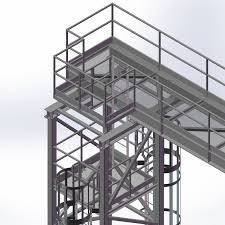How BIM-Driven Fabrication is Improving Speed and Quality in Construction
The construction industry is undergoing a digital transformation, and BIM-driven fabrication is at the forefront of this change. By integrating Building Information Modeling (BIM) into the fabrication and prefabrication processes, construction teams can improve accuracy, reduce project delays, minimize material waste, and enhance overall efficiency. Traditional construction methods often suffer from inefficiencies, including design discrepancies, rework, and unexpected on-site adjustments. However, with BIM Prefabrication and Fabrication Services, the industry is now moving toward a more precise and streamlined approach.
Enhancing Speed with BIM-Driven Fabrication
One of the most significant advantages of BIM-driven fabrication is the acceleration of construction timelines. Traditional workflows often involve manual coordination between different disciplines, leading to communication gaps, design conflicts, and delays. With Digital Fabrication BIM Services, all project stakeholders—including architects, engineers, and fabricators—can collaborate in a shared digital environment, ensuring that every component is accurately designed and manufactured before reaching the construction site.
Key Ways BIM Improves Construction Speed:
-
Prefabrication & Offsite Manufacturing:
- BIM for Prefabrication allows for the offsite production of building components, including structural elements, MEP systems, and modular units, while site work is still in progress.
- This parallel workflow minimizes downtime and significantly reduces the overall project schedule.
-
Automated Clash Detection & Issue Resolution:
- Using Revit Fabrication Services, project teams can detect and resolve design clashes before fabrication, preventing costly delays during on-site assembly.
- Eliminating errors at an early stage prevents the need for modifications during installation.
-
Precise Fabrication with Digital Modeling:
- Fabrication Revit Services provide highly detailed 3D models that serve as digital blueprints for manufacturing.
- Automated data extraction from BIM models enables CNC machining and robotic fabrication, reducing human error and increasing production efficiency.
-
Faster On-Site Assembly:
- Since prefabricated elements are built to exact specifications, they fit seamlessly during installation, eliminating the need for on-site adjustments.
- This reduces labor costs, minimizes disruptions, and accelerates project completion.
Improving Construction Quality with BIM
Beyond speed, BIM-driven fabrication significantly enhances construction quality by ensuring precision and reducing errors throughout the project lifecycle.
Ways BIM Improves Quality:
Accurate and Data-Driven Fabrication:
- Revit Prefabrication Services create highly detailed shop drawings and fabrication models, ensuring that each element is manufactured according to precise specifications.
- This eliminates guesswork, reduces errors, and improves the structural integrity of prefabricated components.
Seamless Coordination Among Stakeholders:
- BIM Prefabrication Services improve communication between designers, engineers, contractors, and fabricators, ensuring that design intent is accurately executed in the final product.
- Cloud-based BIM platforms allow for real-time collaboration, reducing misinterpretations and costly revisions.
Improved Quality Control & Defect Prevention:
- BIM models allow for advanced simulations and structural analysis before fabrication, ensuring that materials and components meet performance standards.
- Quality checks can be conducted digitally, reducing the risk of manufacturing defects and ensuring compliance with building regulations.
Sustainable Construction Practices:
- BIM-driven fabrication optimizes material usage by providing precise quantity take-offs, reducing waste and promoting eco-friendly construction.
- Prefabrication reduces site disturbances, contributing to cleaner and more efficient building processes.
Conclusion
As construction projects grow in complexity, the need for BIM-driven fabrication has become more critical than ever. By integrating BIM Prefabrication and Fabrication Services, stakeholders can enhance efficiency, improve quality, and reduce costs across all project phases. The shift towards digital fabrication is not just about automation—it’s about creating smarter workflows that minimize risks and maximize productivity.
With the rise of Revit Fabrication Services, Fabrication Revit Services, and Digital Prefabrication Services, the construction industry is moving towards a future where projects are completed faster, with higher precision, and at reduced costs. As technology continues to evolve, BIM-driven fabrication will remain a key driver of innovation, helping construction professionals achieve greater sustainability, efficiency, and excellence.




Comments
Post a Comment